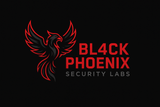Arduino Embraces Matter/Thread: A New Era for Smart Home IoT?

The sprawling landscape of the Internet of Things (IoT) has long been characterized by a perplexing fragmentation of standards and protocols, often leading to compatibility headaches for users and developers alike. However, a significant shift is underway, heralded by major players in the tech industry. A recent development that has captured the attention of the open-source hardware community is Arduino's embrace of Matter and Thread, two protocols widely touted as the future of home automation.
Decoding Matter and Thread: The Vision for Unified IoT
At its core, the drive behind Matter and Thread is to simplify the complex world of smart devices. Matter, an application layer standard, aims to provide a universal language for smart home devices to communicate with each other, regardless of their manufacturer or underlying technology. This means an end to the frustrating incompatibility issues that plague many smart home setups.
Complementing Matter is Thread, a low-power, IPv6-based mesh networking protocol designed for robust and reliable communication between devices. Unlike traditional Wi-Fi which can be power-intensive and create single points of failure, Thread creates a self-healing mesh network, where each device can relay data, extending the network's range and resilience. While Thread often works in conjunction with a Border Router (which might be integrated into a smart hub) to connect to Wi-Fi and the broader internet, its strength lies in the direct, secure, and efficient device-to-device communication within the local network.
Arduino's Strategic Integration: Democratizing Advanced Connectivity
Arduino, a name synonymous with open-source hardware and accessible prototyping, has announced the availability of modules supporting these crucial protocols. The mention of these modules being available as "soft-opensource on Flux" points to a nuanced but impactful approach. While not entirely open hardware in every component, this strategy facilitates open development and experimentation, making advanced connectivity solutions accessible to a broader audience of makers, students, and professional developers.
This move is particularly significant because Arduino's vast ecosystem and ease of use mean that the barriers to entry for developing Matter and Thread-compatible devices are substantially lowered. From hobbyists building custom smart sensors to startups prototyping new home automation solutions, Arduino's integration promises to accelerate innovation and adoption of these standards.
Implications for Smart Homes and Open-Source Hardware
For the smart home ecosystem, Arduino's involvement could be a game-changer. It fosters an environment where:
- Interoperability Becomes Standard: Users can expect their devices to work together seamlessly, reducing vendor lock-in and simplifying setup.
- DIY & Customization Flourish: The open-source nature, coupled with Arduino's platform, empowers individuals to build highly customized and specialized smart home solutions.
- Innovation Accelerates: With easier access to Matter/Thread capabilities, a new wave of creative and functional smart devices is likely to emerge.
Security Considerations in a Unified Ecosystem
From the perspective of Bl4ckPhoenix Security Labs, the convergence facilitated by Matter and Thread, especially with accessible platforms like Arduino, presents both immense opportunities and critical security responsibilities. Matter and Thread are designed with security in mind, incorporating features like strong encryption, secure commissioning processes, and authentication to protect user data and device integrity.
However, the "soft-opensource" and DIY nature of these modules means that the ultimate security posture depends heavily on implementation. Potential challenges include:
- Firmware Vulnerabilities: Custom firmware developed by hobbyists or smaller teams might inadvertently introduce security flaws.
- Supply Chain Security: Ensuring the integrity of all hardware components, even those from open-source channels, remains paramount.
- Secure Configuration: The ease of use must not overshadow the need for users to implement secure configurations, strong access controls, and regular updates.
- Evolving Threat Landscape: As more devices connect, the attack surface expands, requiring continuous vigilance and proactive security measures.
Bl4ckPhoenix Security Labs emphasizes that while protocols like Matter and Thread lay a robust foundation, real-world security demands rigorous development practices, thorough auditing, and ongoing security management throughout the entire lifecycle of an IoT device. The democratization of access to advanced protocols must go hand-in-hand with an unwavering commitment to cybersecurity best practices.
The Road Ahead
Arduino's strategic integration of Matter and Thread is more than just a product release; it's a statement about the future direction of IoT. It signals a move towards a more open, interoperable, and potentially more secure smart home ecosystem. As these technologies mature and become more pervasive, the collective responsibility of developers, manufacturers, and users to prioritize security will be crucial in realizing the full, secure potential of connected living.




